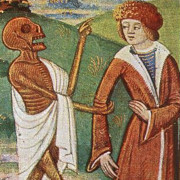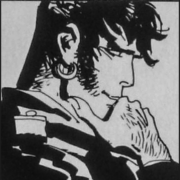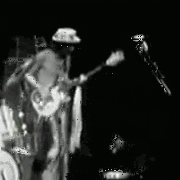|
System Metternich posted:Speaking of Tommy guns: Oh dammit, why didn't I know about this photo a year ago when I was putting together the illustrations for my manuscript?
|
|
|
|

|
| # ? Apr 25, 2024 21:06 |
|
this thread is so so good! if anyone's looking for more archives to look through the Connecticut Digital Archive is a cool project run by UCONN that draws on thousands of images from institutions across the state, ranging from big places like mystic seaport, the wadsworth athenaeum and the state universities down to small local historical societies and libraries. A lot of it will probably be mundane if you're not from CT, but there's some cool stuff there regardless, and a lot of variety.  A cop scratches his rear end as Fidel Castro pulls into New Haven Station, April 1959 ___________________________  a boy does a handstand in Hartford's Colt Park, c. 1921 __________________________  G. Fox & Co.'s christmas display featuring an entire new england village atop their marquee, 1959 __________________________  The state armory in November, 1917 just before a Teddy Roosevelt rally This isn't from the archive but its a historical photo I've always really liked, the Hindenburg passing over Travelers Tower in Hartford 
free hubcaps has a new favorite as of 17:49 on Dec 21, 2020 |
|
|
 (Christ in the House of His Parents, painted in 1849 by John Everett Millais) This was immensely controversial when it was exhibited. People complained that Christ was depicted with red hair and that there was wood shavings on the floor. Charles Dickens also wrote about the depiction of Mary: quote:...so hideous in her ugliness that ... she would stand out from the rest of the company as a Monster, in the vilest cabaret in France, or the lowest gin-shop in England.
|
|
|
|
|
Imagine having the audacity to portray a carpenter's workshop as having wood shavings on the floor.
|
|
|
|
Red hair was also associated with jews, so people were outraged that Jesus was depicted as a jewish boy.
|
|
|
|
|
That's even worse. Depicting a Jewish boy as Jewish. Is there no decency in the world anymore?!?
|
|
|
|
I was about to say something about the light skin tone of everyone but then Dickens really weirded me out.
|
|
|
|
this rules, thank you
|
|
|
|
I really like this, especially John the Baptist getting skeeved out, but why is there a trebuchet in the background? I don't remember one of those in the gospels.
|
|
|
|
it looks like one of these to me
|
|
|
Buttchocks posted:I really like this, especially John the Baptist getting skeeved out, but why is there a trebuchet in the background? I don't remember one of those in the gospels. "Do not suppose that I have come to bring peace to the earth. I did not come to bring peace, but a trebuchet."
|
|
|
|
|
Feel bad for JC and his family. I've heard that trebuchets make bad neighbors.
|
|
|
|
PizzaProwler posted:Feel bad for JC and his family. I've heard that trebuchets make bad neighbors. Not sure if should cheer or boo. But I got the joke.
|
|
|
shelley posted:it looks like one of these to me Shadoof, shadoof, shadoof is on fire We can't reach the water So I guess we let it burn Burn mother Mary, burn
|
|
|
|
|
Buttchocks posted:I really like this, especially John the Baptist getting skeeved out, but why is there a trebuchet in the background? I don't remember one of those in the gospels. So he started with the camel-hair pretty early! Who is the guy on the left meant to be? I mean he's next to a reed basket and has that strange ankles-together pose you see in Egyptian statuary, so is he a kind of Moses to mirror J the B's Elijah? shelley posted:it looks like one of these to me I love that "shadoof" is also the noise that a trebuchet should make. (Guess where my user name comes from.)
|
|
|
|
PizzaProwler posted:Feel bad for JC and his family. I've heard that trebuchets make bad neighbors. We make do.
|
|
|
|
What the gently caress. This painting is ridiculous. The screw was bleeding edge technology in the first century, just being used on wine presses, and I am supposed to believe that this humble carpenter in a provincial backwater has a screw vice?
|
|
|
|
Groke posted:Not sure if should cheer or boo. But I got the joke. You should cheer (I got it, too).
|
|
|
|
Platystemon posted:What the gently caress. This painting is ridiculous. God provided the blueprints to Joseph to settle the custody issues.
|
|
|
|
System Metternich posted:Speaking of Tommy guns: dutifully hiding his hosed up arm.
|
|
|
|
I think it went beyond suggesting Christ’s Jewishness, just the very idea of depicting kid Jesus and his family as regular people was appalling. I’m a little taken aback at Dickens’s criticism. Mary is supposed to look average, even homely, because she’s any mom comforting her kid getting a boo-boo for the first time while he’s working with dad, who’s making sure his son is okay. Meanwhile Jesus is all “aww mom, I’m fine” like most kids around that age. The Holy Spirit is a fat bird perched on the ladder, I love it.
|
|
|
|
Yeah the expressions are fantastic, especially Mary & Jesus
|
|
|
|
John the Baptist off to the side is the poor cousin who gets the hand me downs even though he's older.
|
|
|
SUPERMAN'S GAL PAL posted:I think it went beyond suggesting Christ’s Jewishness, just the very idea of depicting kid Jesus and his family as regular people was appalling. I’m a little taken aback at Dickens’s criticism. Dickens never missed a chance to be an rear end in a top hat.
|
|
|
|
|
 Now what is going on here? This is the church brass band of Nain, a remote coastal settlement far in the north of Labrador that's mostly populated by Inuit. The photograph was taken in around 1900 by pastor Paul Hettasch, a German who had come there as a missionary. Like most of the Inuit population of northern Labrador back then and even today, Hettasch was part of the Moravian church, originally a Czech Hussite offshoot that had experienced a big spiritual revival in the early 18th century and had done extensive missionary work all over the world from their base in Herrnhut, Saxony. The Moravians were and are strongly influenced by Lutheran and Pietist theology, focusing on each human's individual path to salvation and spreading the good word as far and wide as possible. They also show a strong commitment to not being "of this world", so to speak, which often brought them in conflict with local state authorities. Although they also show some strong Calvinist influence in their theology, they never condemned music as possibly treacherous to one's soul as many other Calvinist communities did. Quite the contrary: Moravian congregations place an immense importance in music (and especially singing) for teaching the faith, strengthening communities and celebrating God's love. They also exported this religious practice into their many missions, as can be seen by the Inuit of Nain.  The Nain church choir with three violins and a cello, c. 1900 The Moravians were not only present along the coast of Labrador but extended their missionary efforts all over North America, establishing many new congregations throughout the 18th century where they tried to convert indigenous people to Christianity. The following map shows their most prominent mission stations during the 18th century:  Now the Moravian effort to christianise indigenous Americans is not only interesting from a political, social or theological perspective, but also from a musicological one. Each Moravian ship sailing towards the New World brought not only missionaries, bibles and supplies with it, but also - music. There are plenty of records of sheet music and instruments being brought over from Europe. And it wasn't only Christian hymns either; the Moravian missionaries didn't want to miss out on what was popular in their German homeland, so lots of music written by Mozart, Haydn, Mendelssohn or Händel found its way into the often remote North American congregations as well. Moravians were well renowned for their musical skill. When the French military officer François-Jean de Chastellux visited Moravian settlements in eastern Pennsylvania in 1780 during his involvement with the Revolutionary War, he noted: quote:At one of these cleared out settlements in the midst of a forest . . . I was astonished at the delicious sounds of an Italian Concert[o]; but my surprise was still greater, on entering a room, where the performers turned out to be common workmen of different trades, playing for their amusement. At each of these places, the brethren have a common room, where violins and other instruments are suspended, and always at the service of such as choose to relax themselves, by playing singly, or taking part in a concert. and in his 1788 autobiography, Benjamin Franklin recounted a visit to the Moravian community of Bethlehem several decades prior which seems to have had left a lasting impression: quote:I was at their Church, where I was entertain’d with good Musick, the Organ being accompanied with Violins, Hautboys, Flutes, Clarinets, &c. This import of European popular music didn't stop at the missionaries, either. Many indigenous members of the Moravian communities took a quick liking to the melodies of e.g. Mozart's Magic Flute and were eager to integrate them in their own spiritual and musical practices, supported by missionaries. A significant number of sacred pieces commonly sung by Moravian missionary congregations were in fact contrafacts, i.e. music where the original text was changed to better align with Moravian theology. So while Mozart's Catholic hymn Ave verum corpus originally begins with the Latin for: quote:Hail, true Body, born German Moravians changed it into: quote:Hail to you, Lamb full of wounds, erasing any reference to Mary while putting even more emphasis on Christ's suffering and death. These changes often included translations into indigenous languages. This wasn't without its own difficulties, however: The translations were often done by the missionaries who sometimes had only a rudimentary grasp of the language, the wildly different grammar between many North American native languages and e.g. German, Italian or Latin made fitting the translation into the music's meter a challenging task, and finally there simply were no words in the indigenous languages for some European religious concepts. The missionaries had to either describe them in a roundabout way - hard to do when you are trying to set the words to music -, invent new words altogether or retrofit existing ones with a resounding "eh, close enough". All of this has led to native translations of European music of the time to be rather hard to understand. The Inuktitut translation of the beginning of Mozart's Ave Verum for example roughly goes: quote:[Belief] If this doesn't make a lot of sense to you, don't be worried - it doesn't to native Inuktitut speakers either  It wasn't just the translations, too: The natives often would incorporate traditional musical practices into the European pieces they encountered, adapting them to their own understanding of music and sometimes radically changing the structure of the piece altogether. One instance of this is the trajectory of the "Geist aller Welten" chorus from J.G. Naumann's 1780 opera Cora und Alonzo, which was first changed by German Moravians into a hymn titled "Schöpfer Erlöser, Herr Himmels" and later translated into Inuktitut as "Pingortitsijok killangmik". One surviving manuscript of said translation had almost all of the original string parts eliminated in favour of parts that duplicated the soprano, alto, tenor and bass lines from the original opera chorus. The majority of the dotted rhythms in the original also were replaced with even note-values, and ornamentation characteristic of the original style of the piece were removed. Thus, the European music became indigenised and adapted to more resemble traditional Inuit drumming or their Shamanic chants.  An 18th century Moravian hymnal with the hymns Lamb, lamb, o lamb! and Thy holy five wounds translated into Mohican. As you can see, they apparently didn't find a Mohican word that represented "Lamm" (=lamb) well enough, so they just left it as it is While in the US, almost all traces of indigenous Moravian musical practice and tradition were suppressed during the 19th century, they still live on in Canada. The Moravian archives of Labrador abound with manuscripts that are still used today, and in Nain you can still hear the church choir sing the Inuktitut translation of Ave verum every year at Good Friday, mangled translation and all, accompanied by instruments that were first brought over by European missionaries centuries ago and have been in continuous use ever since. You can find the photos from Nain in the Digital Archives of the University of Newfoundland. Most of this post and all of its translations come from Sarah Eyerly's paper Mozart and the Moravians (in: Early Music vol. XLVII, 2019, pp. 161-182). Apparently there are recordings of the indigenised European pieces (there is a video of Dr Eyerly on Facebook where she gives a presentation on this topic and I think plays a bit of that, but the audio quality isn't good and I haven't had the time to give it a proper listen), but all the recordings I have found so far like this are just the translations performed in the classical European style. e: There are two archival recordings on this site which seem to go more into that direction, but tbh I'm not entirely sure e2: The centuries-long presence of German missionaries in northern Labrador also left traces in the local Inuktitut dialect, including numbers, weekdays and the word kâttopalak ('potato') from German Kartoffel System Metternich has a new favorite as of 18:50 on Dec 28, 2020 |
|
|
|
Thats pretty neat. All I knew about the moravians was based on their woodworking history.
|
|
|
|
Yeah! Some years ago I helped a genealogist translate a Danish letter from the US Virgin Islands (Danish West Indies before 1920) that mentioned the Herrnhutiske Brødremenighed, but I didn't know much about them, especially not the music stuff.
|
|
|
|
The Sasquatch Buddha reclines in contemplation (1907) I tried and failed to find a higher res image of the painting. If anyone does, please share. I'd really like to see it in all its glory.
|
|
|
|
It’s not this specific painting, but I found a similar ad: „The favourite of women and children. Lionel the Lion-Man, half man, half lion. Alive“
|
|
|
|
Prime avatar material
|
|
|
|
I like that they specify that he's alive.
|
|
|
|
The ad is in German yet Lionel reads English literature, was he abducted?
|
|
|
|
Worf and Chewbacca's lovechild.
|
|
|
|
WITCHCRAFT posted:The Sasquatch Buddha reclines in contemplation (1907) Might be wrong, but I'm pretty sure that's a hand-tinted photograph. By popular demand posted:The ad is in German yet Lionel reads English literature, was he abducted? Wikipedia posted:In 1901, Lionel traveled to the United States and started appearing with the Barnum and Bailey Circus. He toured with the circus from then on, occasionally going back to Europe. Original picture's from 1907 so probably taken in the US. Could see Barnum & Bailey shoving a copy of Shakespeare in his hand to play up the contrast between his "beastly" exterior and "civilised" interior even if he couldn't read it.
|
|
|
|
I like how early 20th century people were so racist that some hairy dude was obviously a beastman to them. No wait not 'like', more
|
|
|
|
shakespeare's works were extremely popular in turn of the century germany, that point in time developed something of an intellectual current of "shakespeare as a german poet" in these very abstract monolithic cultural ways that the 19th century loved so much and imparted on the 20th
|
|
|
By popular demand posted:I like how early 20th century people were so racist that some hairy dude was obviously a beastman to them.
|
|
|
|
|
it probably sucked to hell, but the other option was dying alone in the woods, and also it wasnt a a choice you could make anyway i mean today is a play the cards youve been dealt kinda world, and back then it was even more so
|
|
|
|
Georgia Archives Virtual Vault: Historic Schools Photograph Collection. I found this one pretty recently. quote:The Historic Schools Photograph Collection contains approximately 1,800 images taken by the Georgia Department of Education in the 1950s. The images show Georgia primary and secondary public schools that were scheduled for demolition. The collection includes both white and African American schools from across the state. There are some new school photographs as well. The description simplifies the reasoning. The program was a series of state grants to local boards of education, with rent paid back over a course of 20 years. After that, the buildings became owned by the local BOEs. Nearly every school system - and Georgia had about 200 of them - took advantage of the program. The building program was launched because schools were in awful condition. It was also launched because Georgia's government realized that even before Brown v. Board of Education if they did not make an effort to modernize Black schools, they were wide open for a lawsuit that struck down integration. Separate, all right, but definitely not equal (even though there were some right horrible white schools, just not near the same percentage of them). There had already been a few suits filed, though none went anywhere for various reasons. This program bought Georgia a good 15 years before the Feds got tired of the South's bull and began forcing the issue. I haven't gone through all the photos, but they're labeled pretty well. A significant amount are military barracks, the cheap and easy way to solve your classroom needs post-WW2. The military had buildings to offload and broke BOEs needed to add on to or replace burned buildings. They're one thing that race didn't matter on. They're interesting photos also in that this was the South. Everybody had this problem and a handful of states copied Georgia's funding scheme. The photos could just as easily be Alabama or the Carolinas.
|
|
|
|

|
| # ? Apr 25, 2024 21:06 |
|
Are you guys excited to get vaccinated? I know I am! Anyway here's my great-grandmother's cowpox vaccination from 1886 Norway. 
|
|
|












































